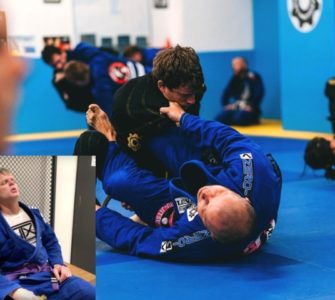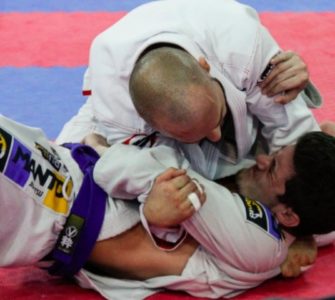Finding one’s personal BJJ style is a never ending road – there will always be options for improvement, no matter how much experience a jiujitero may have.
However, the biggest hurdle to cross is always found at the beginning of a journey. And when a BJJ practitioner has just started developing his/her personal preferences and a feel for the sport, it can become very difficult to choose a specific approach and style of rolling to focus on.
So, what can a jiujitero do in order to navigate this road with more ease?
Firstly, a BJJ practitioner needs to understand that he/she first needs to go through a period of training before they start developing a specific style.
This is for the simple reason that fundamental concepts and techniques need to be practiced and ingrained well, in order for a jiujitero to be able to implement them into his own, unique approach – to design his own way of setting them up and doing them.
Once a jiujitero is past this beginner stage, he can take comfort in knowing that he can truly start working on his own style. And to begin doing so, it is a good option to start by paying a fair bit of attention to how his body behaves during rolls.
What do you think you do well? What are some of your high percentage submissions? Do you lean more towards pressure passing rather than using explosive movements? Simply – what do you naturally tend to do when you roll, what feels most comfortable and intuitive? Do more of that.
Try to find ways to implement these techniques more, in different ways and through different positions; try to develop your game through developing your strong side first.
However, a jiujitero should not only rely on developing his strong side in the pursuit of developing his style. He should also try to gain excellence in less favorable positions and techniques.
This means that from time to time, you should try putting yourself into a position you don’t usually gravitate towards and work your way up from there. Go for that transition and submission that had never made much sense to you, just give it a shot. Try it, over and over again, until you figure out the details to success that you were missing all along.
This will lead to a more well-rounded feel for BJJ, as well as to a more detailed jiujitero’s self-knowledge of his capabilities and options – which he can then use to further his style for the better and with more understanding.
And finally, a jiujitero should learn from the best. When searching for a style that would suit him, he should look towards his role models for inspiration.
These are the people you love to look at competitions. There is something about their approach to the game you absolutely adore, and their techniques are something that you can deeply imagine doing yourself… You get lost in thought, even though you should be studying or scheduling that meeting. Basically, they are your BJJ crush.
Analyze their style. See what it is that you like so much about it, which specific aspects, which movements. Then, try to copy these aspects during your rolling sessions; experiment with them and use them to the best of your abilities. Slowly, you will see your style developing that much more into a beautiful arrangement of pinpoint submissions and movement you have always dreamed of.
For The First Time Ever, Lucas Leite Shares His World Famous Coyote Half Guard Adapted For No Gi.
Learn The Weird Techniques that Lucas Leite uses so well against bigger opponent’s that he voluntarily enter tournaments in the ultra-heavy division with an almost 100 lb weight deficit. 10% OFF WITH DISCOUNT CODE “BJJEE”.


















